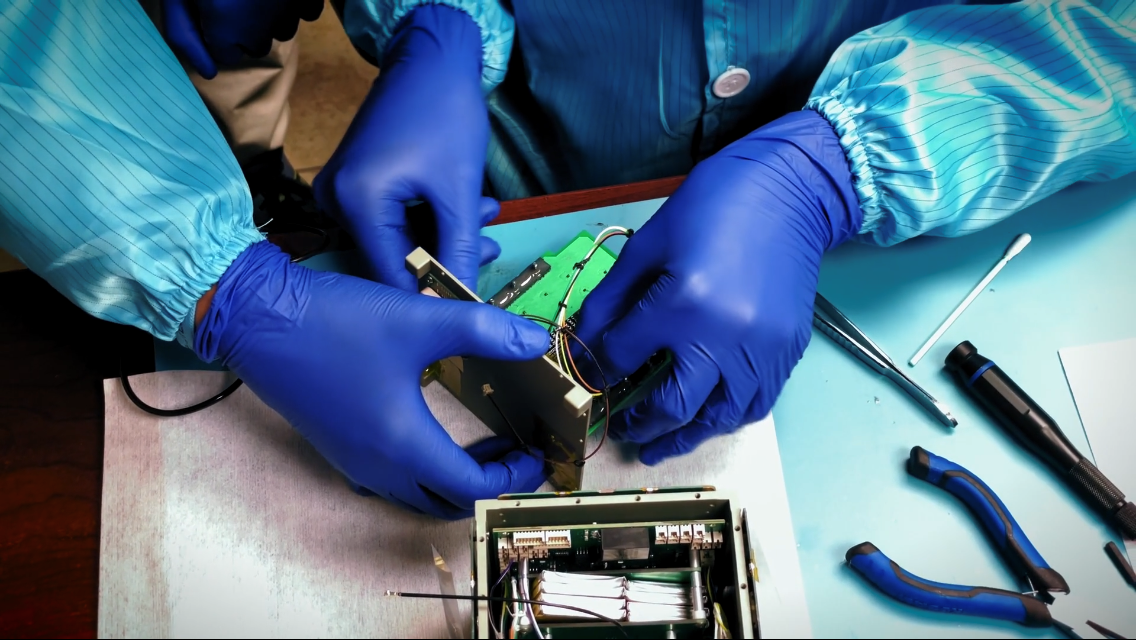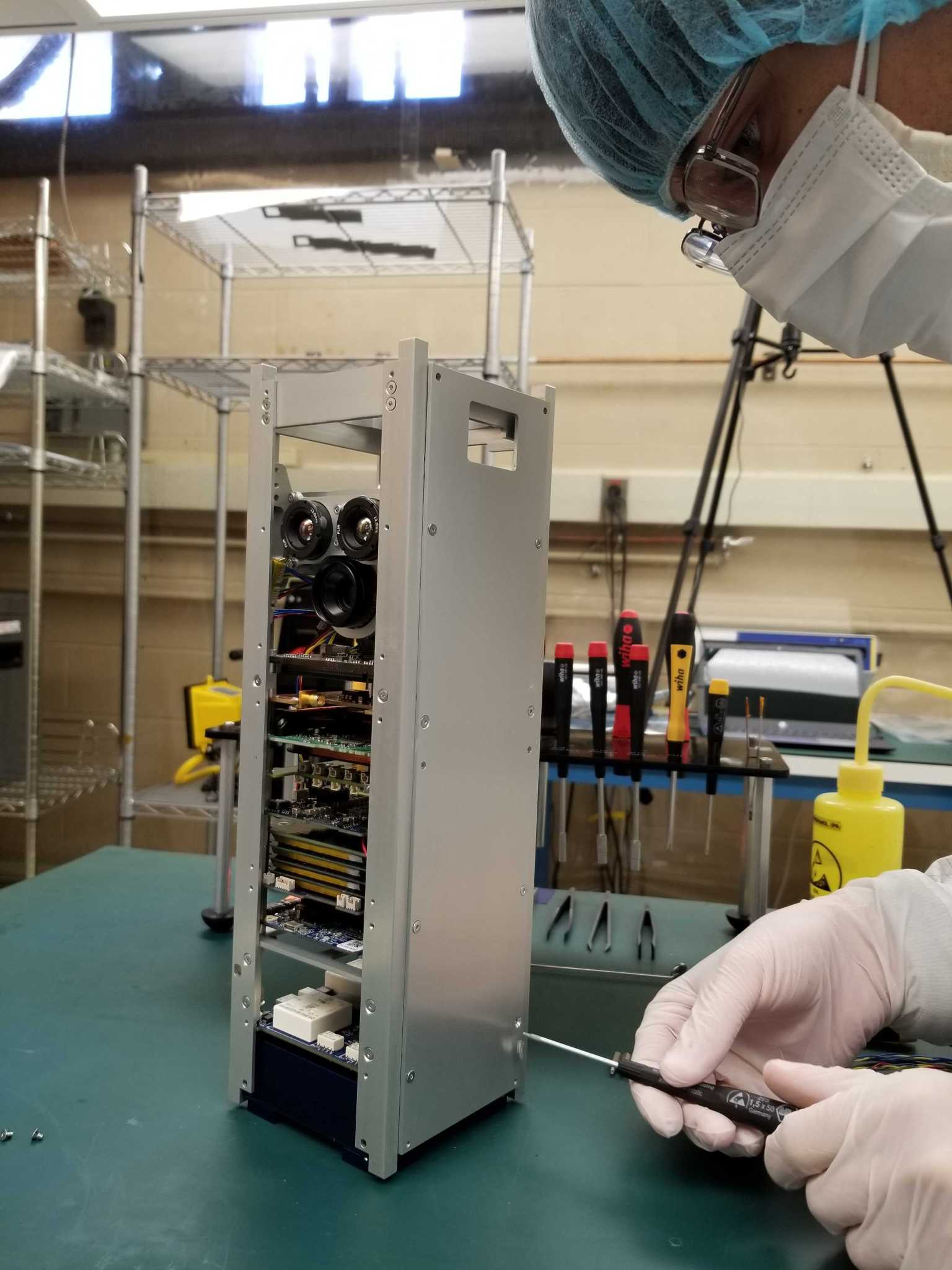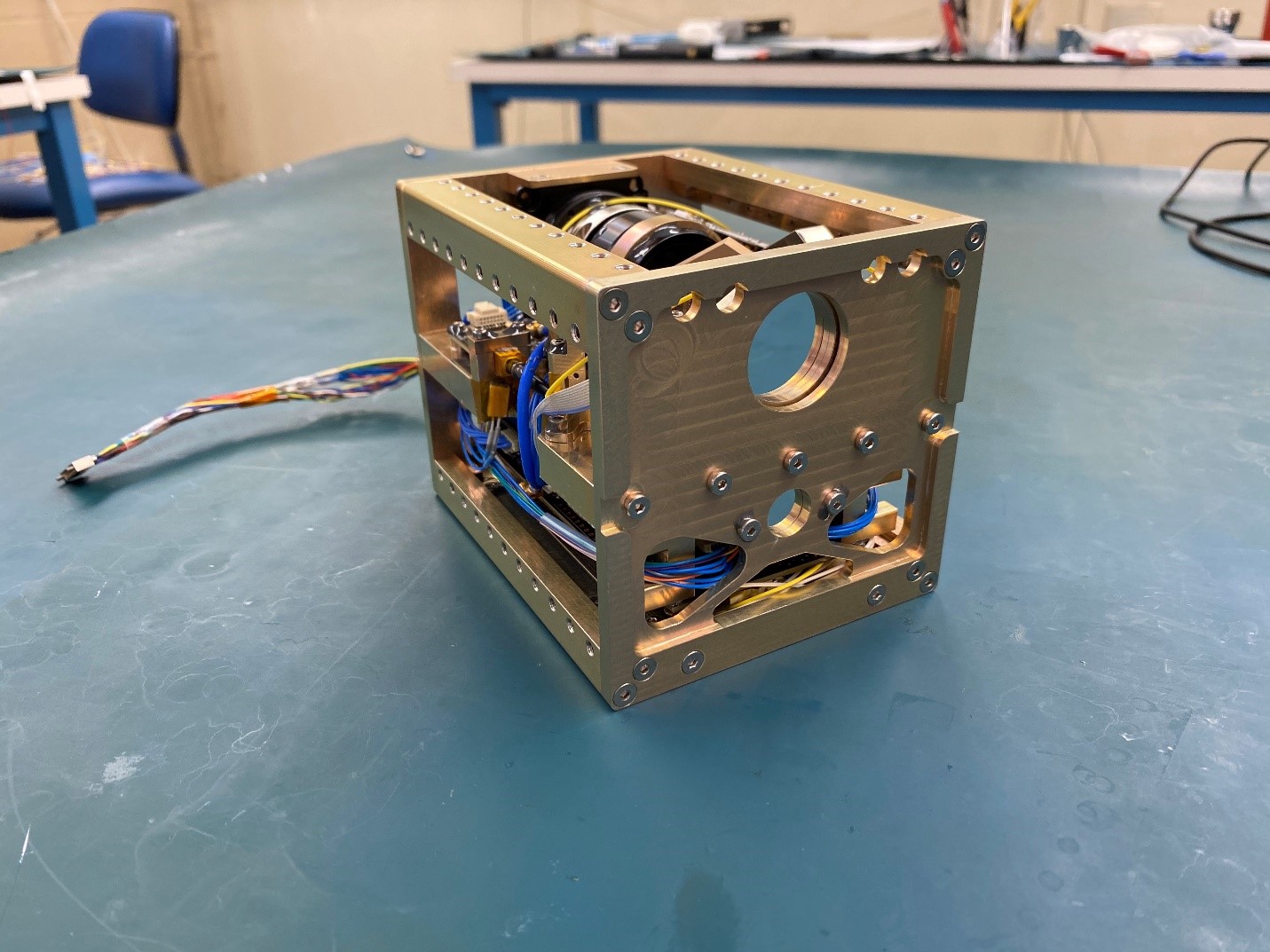
By Jim Cawley
NASA’s Kennedy Space Center
Five satellites developed by schools from Florida, Alabama, and Massachusetts, along with NASA’s Ames Research Center in Silicon Valley, California, will soon launch into low-Earth orbit on the next ELaNa (Educational Launch of Nanosatellites) mission.
ELaNa 45 consists of five small satellites, known as CubeSats, which will fly as auxiliary payloads on NASA’s SpaceX 25th Commercial Resupply Services (CRS-25) mission to the International Space Station. Liftoff is targeted for July 14, 2022, from NASA Kennedy Space Center’s Launch Complex 39A. ELaNa missions are managed by NASA’s Launch Services Program (LSP), based at the agency’s Florida spaceport.
CLICK A is a CubeSat project run out of Ames and includes collaboration with the Massachusetts Institute of Technology (MIT) and the University of Florida. Other CubeSats flying aboard the ELaNa 45 mission include CapSat-1 from The Weiss School in Palm Beach Gardens, Florida; JAGSAT from the University of South Alabama; BeaverCube from MIT; and Drag Deorbit Device (D3), from Embry-Riddle Aeronautical University.
CLICK A is the first of two missions called CubeSat Laser Infrared CrosslinK (CLICK). The goal is to demonstrate technology to advance communications between small spacecraft, as well as the capability to gauge their relative distance and location. CLICK A will test elements of optical – or laser – communication, using pointing technology with one spacecraft. That will pave the way for CLICK B and C, which will use two CubeSats to communicate with each other.
Optical communication increases the available data rate between CubeSats, which enables more data to be delivered. That goes to the heart of CLICK’s objective, said Project Manager David Mayer, an Ames researcher who works with MIT professor and principal investigator Kerri Cahoy.
“Think about what you can do on the internet with higher data rates as opposed to how it used to be when everyone had dial-up modems,” Mayer said. “With space communication, an awful lot of spacecraft now are limited to dial-up modem speed.”
That can change if CLICK meets its ultimate objective – proving that optical communication can be effective between CubeSats.
“There’s all sorts of exciting science that can be done with constellations of small spacecraft. And having high data rate links between those individual spacecraft enables greater and greater types of science for future missions,” Mayer said. “It also provides the ability to look at data simultaneously from a lot of different points, instead of just a single view.”
Proposed by seventh-grade student and co-investigator Samer Elhoushy, CapSat-1 is a technology demonstration that will eventually validate a capacitor-based electrical power system in a CubeSat. A capacitor is a significantly smaller battery than lithium-ion polymer (LiPo) batteries currently used in CubeSats.
The capacitor also has proven to be safer and more durable. CapSat-1 would compare power/voltage efficiency with the LiPo battery during a six-month time period.
“I expect the CapSat-1 mission to deploy successfully and provide both telemetry data and payload voltage data over its lifetime,” Elhoushy said. “More importantly, though, is that the CapSat-1 provides educational and informative value that both I and other middle- and high-school students on the team can appreciate over the long term.”
At NASA, CubeSats are playing an increasingly larger role in exploration, technology demonstrations, scientific research, and educational programs. The standard CubeSat dimensions are approximately 4 inches cubed – known as one unit or 1U. CubeSats supported by NASA’s CubeSat Launch Initiative (CSLI) are built as a single 1U or as multiples of this unit – 2U, 3U, or 6U.
Satellites are deployed one after another from a CubeSat carrier system, or in the case of ELaNa 45, they go to the space station for deployment. JAGSAT will measure plasma electron density in the ionosphere.
“The ionosphere affects all radio and GPS frequencies,” said Edmund Spencer, principal investigator for the JAGSAT project. “So, if we have a better idea of the electron density and how it evolves in time and space, then it helps us better understand how scintillation works.”
Scintillation is the rapid modification of radio waves caused by small scale structures in the ionosphere – the layer of atmosphere from about 50 to 600 miles above the Earth’s surface. This modification can prevent a GPS receiver from locking onto a signal, making it impossible to calculate a position.
BeaverCube will measure cloud properties, ocean surface temperatures, and ocean color to study Earth’s climate in weather systems. It will also demonstrate an application for the use of shape memory alloy technology using on-orbit calibration.
D3 will test algorithms and hardware for controlled drag-based re-entry from low-Earth orbit. It is equipped with four deployable and retractable surfaces that operate like motorized measuring tapes and can extend up to more than 12 feet.
The CSLI was created by NASA to attract, train, and retain students and young professionals in science, technology, engineering and mathematics (STEM). The initiative enables the participation of U.S.-based educational institutions, non-profit organizations, and NASA centers in educational spaceflight, demonstrating novel technological and scientific experiments.
Established in 2010, CSLI has provided many opportunities for small satellite payloads built by universities, high schools, and non-profits to fly on upcoming launches. Since its inception, NASA has selected more than 200 CubeSat missions, representing 42 states, the District of Columbia, and Puerto Rico. To date, the CSLI has launched more than 140 CubeSats on ELaNa missions.



























